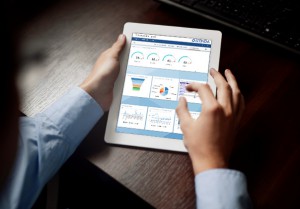 Self-service business intelligence has much to offer when integrated into an independent software vendor’s own application. Take a look at just six things the boss definitely should know about implementing self-service BI:
Self-service business intelligence has much to offer when integrated into an independent software vendor’s own application. Take a look at just six things the boss definitely should know about implementing self-service BI:
1: If business end users can create their own dashboards and reports – and dive into them for even more data – adoption of the business intelligence platform will be more widespread.
Make your client’s end users wait for new reports to be created by IT and you’ll find that few workers in any part of your client’s company will want to use this part of your application. Self-service features enhance its use rather than discourage it.
Claudia Imhoff and Colin White said in their paper on “Self-Service Business Intelligence” that an application should be DIY BI that:
- Make BI tools easy to use
- Make it easy to access source data
- Make BI results easy to consume and enhance
- Make data warehouse solutions fast to deploy and easy to manage
2: Business end users solve problems when given the right tools. Those people working directly with the company’s products and services will find answers to problems that even the C-level executives didn’t know exist. This creates ROI for your clients – and by extension, to your own company.
3: Putting business intelligence in the hands of the business end users gives back time to your client’s IT department. And it gets your own IT team out of the report building business, a time-consuming chore for a group of software developers whose expertise lies in your core application.
Forrester’s Boris Evelson suggested that only 20 percent of BI requests should be routed through the IT department in “The Forrester Wave: Self-Service Business Intelligence Platforms Q2 2012” as quoted in an article on SearchBusinessInteligence.in. That advice still holds true today.
4: Using a self-service BI platform that’s integrated into the application your team creates gives clients control of their data so it can be presented in a manner that helps the end users make intelligent decisions based on their analysis of the data. Dashboards they can create and visualizations that they can use to dive deeper into the data enhances its usability and usefulness – and enhances your application.
5: Your clients remove (or at least reduce) the shadow IT that has grown as end users in various departments struggled to create their own business intelligence tools, using spreadsheets with no data governance and no certainty that any conclusion drawn is valid. A self-service BI platform gives them the tool to draw on data that can – and should – be cleaned at the source or with the application. If an end user makes decisions based on faulty data due to mismatched spreadsheet tables, missing data, or “null” entries that are improperly handled, the resulting problems could be costly.
6: Every business operates under some type of regulatory control, such as HIPAA. A self-service BI platform can let clients keep control of every bit of data that they can see – and by creating user roles, tenants and groups, those regulations can be tightly followed. A marketing staff member certainly shouldn’t have access to individual patient’s personal information or of the payment details such as credit card numbers. But that marketing maven might have need of the total number of procedures handled by the staff and what parts of the region around the hospital patients live so services can be promoted to those communities. Those assigned personas will enable security within the application.
Follow Izenda on social media for the latest on technology and business intelligence:
![]()
![]()
![]()

